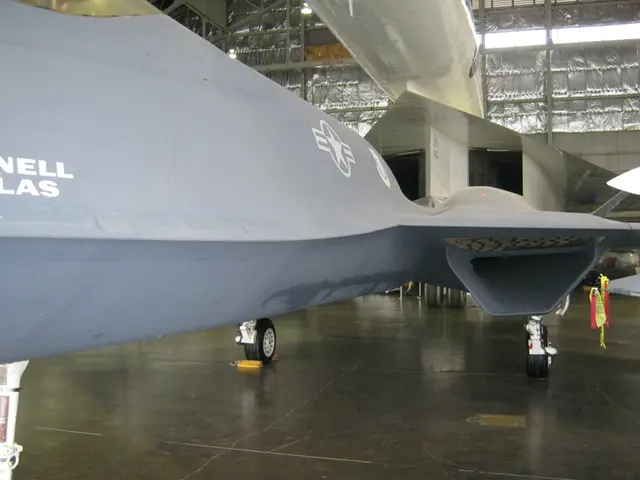U.S. chip production experiences a resurgence under Trump's guidance
In a significant move, Nvidia has announced plans to integrate x86 processors from Intel into its AI infrastructure platforms. This collaboration, amidst increasing government intervention under U.S. President Donald Trump, seeks to strengthen key industries under the guise of national security.
The partnership between Nvidia and Intel is not without its political implications. Amid trade tensions with the U.S., Beijing has recently increased pressure on Nvidia. However, the U.S. government's plans to expand domestic chip production have received a boost with a $5 billion investment from Nvidia into Intel. This investment, according to analysts at Wedbush Securities, is a "gamechanger" that will put Intel "at the center of the AI game."
The investment provides Trump with arguments for the effectiveness of his interventionism, and Nvidia relies on his support in this environment, as emphasised by Hargreaves Lansdown. The investment is "less about money and more about influence," according to Matt Britzman, equity analyst at Hargreaves Lansdown.
The collaboration will see Nvidia and Intel developing products for data centers and personal computing. For Intel, the investment provides an opportunity to gain access to advanced technology and become more competitive, while Nvidia gains a stronger foothold in U.S. chip production.
However, Intel's foundry business has been struggling. The business has incurred an annual operating loss of over $5 billion since 2021, with a total loss of over $13.4 billion in the last fiscal year and over $5.5 billion in the first half of this year. The company is seeking a major customer for its next-generation 14A production process, as using it internally would be too costly. If Intel fails to find a mass customer for the 14A platform, it could significantly burden the return for shareholders.
The government's investment in Intel, agreed in August, includes a five-year right to acquire an additional 5% in Intel at $20 per share if the chipmaker gives up the majority of its foundry business. However, this government investment complicates the sale of Intel's foundry business and the search for strategic private investors.
The success of Intel's struggling foundry business is not yet a success story. Citigroup and other Wall Street firms have long advocated for the sale of Intel's foundry business due to the company's struggles to compete with foundry specialists like TSMC and attract orders from designers like Qualcomm.
Following the announcement, Intel's stock jumped over 25% in New York morning trading on Thursday. Nvidia is acquiring the stake at a price of $23.28 per share. The cooperation between Nvidia and Intel is a testament to the ongoing influence of government intervention in the tech industry and the complex interplay of economics, politics, and technology.
Read also:
- MRI Scans in Epilepsy Diagnosis: Function and Revealed Findings
- Hematology specialist and anemia treatment: The role of a hematologist in managing anemia conditions
- Enhancing the framework or setup for efficient operation and growth
- Hydroelectric Power Generation Industry Forecasted to Expand to USD 413.3 Billion by 2034, Projected Growth Rate of 5.8% Compound Annual Growth Rate (CAGR)








